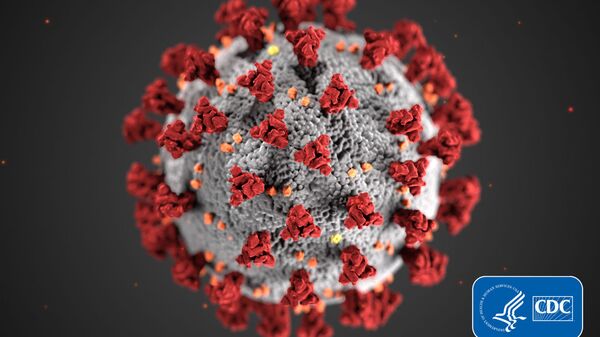According to Dr. Amesh Adalja, a senior scholar with the Johns Hopkins Center for Health Security in Baltimore, Maryland, the virus infects human cells using a spike protein and receptor “that is widely distributed to multiple tissue types,” UPI reported.
"This may explain its ability to impact multiple organ systems beyond the respiratory tract, to which other coronaviruses are largely restricted," Adalja explained.
SARS-CoV-2, the virus that causes COVID-19, is about 1/100th the size of an average human cell and uses about two-thirds of its genetic material injected into a host cell in order to replicate. The host cell then starts making proteins necessary to create new copies of the virus’s genetic map.
However, instead of coming out of the cell’s membrane, like many viruses do, SARS-CoV-2 stops at a structure inside the cell known as the Golgi complex, which is responsible for processing and packaging macromolecules like proteins and lipids that are made by the cell.
As the COVID-19 virus psses through the Golgi membrane, it uses a piece of the membrane to create a protective outer envelope. The Golgi complex then encloses the virus in a vesicle, after which it is transported to the cell’s surface.
According to researcher Carolyn Machamer, a professor of cell biology at Johns Hopkins University School of Medicine, the coronavirus particle then emerges from the cell in its complete form. Many other viruses, by contrast, complete themselves by using a piece of the cell membrane to create a protective barrier on their way out of the cell.
"We're trying to understand the benefit for the virus, because it's a very inefficient way of getting out of the cell. Viruses are so streamlined, and they can mutate. If the process wasn't advantageous, the virus would be doing it a different way,” Machamer explained.
It’s also interesting that the COVID-19 virus assembles itself in this manner, because the Golgi complex is acidic and could potentially damage the spike protein that the virus uses to infect cells. However, researchers say that the novel coronavirus has the ability to neutralize the acidity of the Golgi complex so that it can get a vesicle coating without impairing itself.
The extra steps the virus goes through to replicate, such as entering the Golgi complex and then emerging from it fully assembled, could potentially be exploited by researchers to prevent the spread of COVID-19.
Current drugs, such as the antiviral medication remdesivir, block the replication process inside the host cell.
"We don't have anything for the later steps, where the virus assembles and then makes it way out of the cell," Machamer noted.
"Treatments for [the coronavirus] attack various points of the cycle it takes in entering and traversing cells, as do treatments for all viruses," Adalja added.



